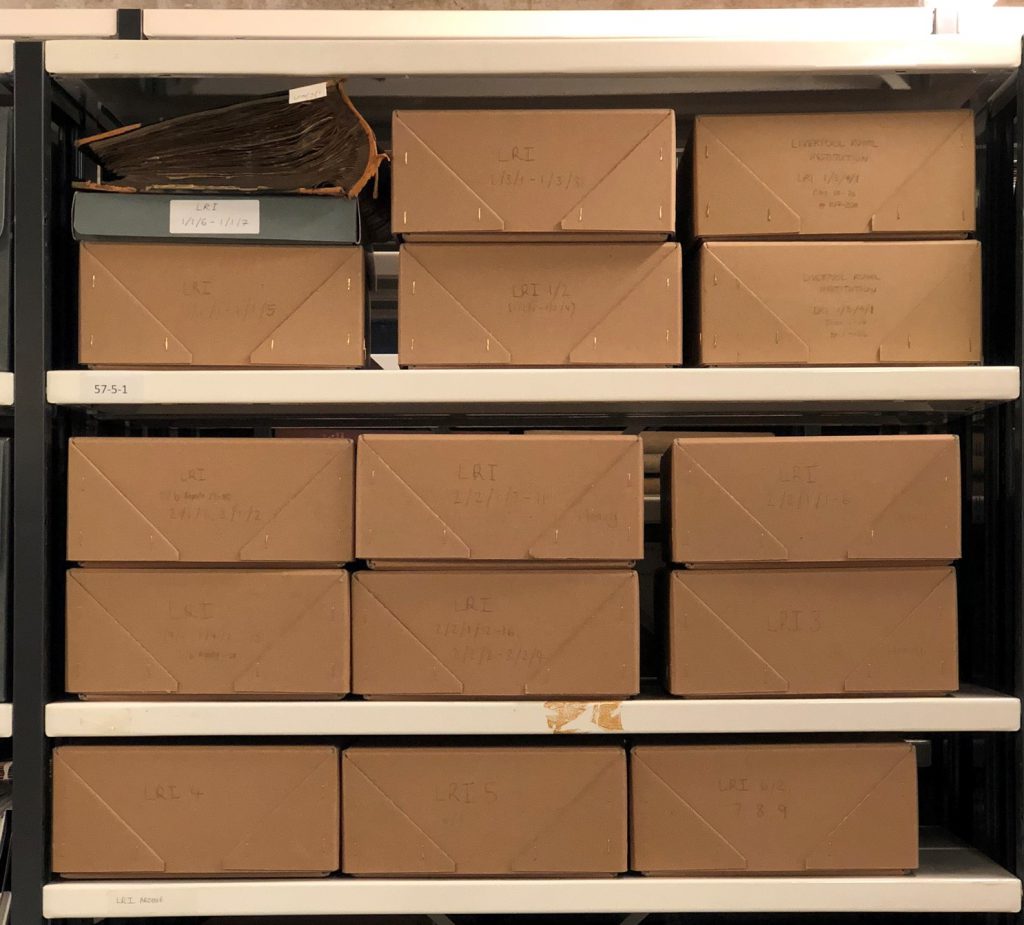In 1958, the building was begun on Elmswood Road, Mossley Hill, Liverpool of a ‘new women’s hall of residence’, which would become Dale Hall, named for Alfred William Winterslow Dale (1855-1921) first Vice-Chancellor of the University of Liverpool (1903-1919). More than fifty years later, Dale Hall is to close and a selection of books from its library which help to capture the idea and intention of a Hall library are being transferred to Special Collections & Archives.
SC&A will be putting on display a selection of these books, with their specially-designed bookplates and former owners’ inscriptions, many of which date back to the days of University Hall, the university’s first accommodation for women students. A few salient dates will show the origins of Dale Hall’s library:
- October 1899 – the original University Hall opens in a private house at 163, Edge Lane. The donor, Emma Holt, is commemorated in many of the Library books.
- 1904 – University Hall moved to Holly Road, Fairfield, as marked by library address stamps.
- 1921 – University Hall is handed over to the University by the committee of women, including Miss Holt, who had run it.
The pioneering spirit of University Hall is captured in the inscriptions by the Liverpool Ladies’ Educational Association, founded by Anne Jemima Clough (1820-1892), and by other eminent women such as Bessie Braddock, MP (1899-1970).
- 1939 – the Holly Road house is commandeered by the War Office as a postal censorship office; University Hall takes over the Ullet Road houses of Rankin Hall.
- July 1945 – Rankin Hall becomes the second women-only hall, expanding into the houses of 38-46 Ullet Road.
- 1959 – Dale Hall opens with Elizabeth Leese, previously Warden of Rankin Hall, as its first Warden.
The September minutes of the Library sub-committee include lists of books proposed for both Dale Hall and Rathbone Hall, a men’s hall of residence which opened on the Greenbank site in the same year. The lists for most subjects, such as religion, art, classics and philosophy are identical, but under ‘Travel and Exploration, Topography’, books recommended for Rathbone Hall only included accounts of Scott’s last expedition, Herzog’s ascent of Annapurna, Capt Slocum’s Sailing alone around the world and a history of piracy. Under English Literature, the love letters of Elizabeth Barret and Robert Browning are on the Dale Hall list only, whereas Joseph Conrad’s novels are deemed to be men-only with the exception of Lord Jim and Nigger of the Narcissus. Student reading also included German, Italian, Spanish, Russian and French literature, such as a translation of Laclos’s Les liaisons dangereuses (for men only). Under History, the men had the life Captain Cook and the women Florence Nightingale. For relaxation, a section of ‘Miscellaneous’ was added, proposing The Art of English Costume, and books on Good Housekeeping and Entertaining for the women of Dale, but Teach Yourself Billiards & Snooker for Rathbone’s men. The committee also suggested,
A Selection of writings of wines and food, including some of the writings of … ‘Bon Viveur,’ and the Pelican on wines and spirits.
Once the new Halls had opened, the students themselves had a say in their Library. The women at Dale suggested works by Colette (in French, contradicting the Library Committee’s idea that only translations of foreign literature would be read), works illuminating both sides of the war during which they were born: Mein Kampf and Dietrich Bonhoffer’s Letters and Papers from Prison, books on maths and chemistry, and the light-hearted Molesworth by Ronald Searle, set within the entirely male world of prep school. Their choices, and the history of the Hall libraries can be explored in the University Archive.
